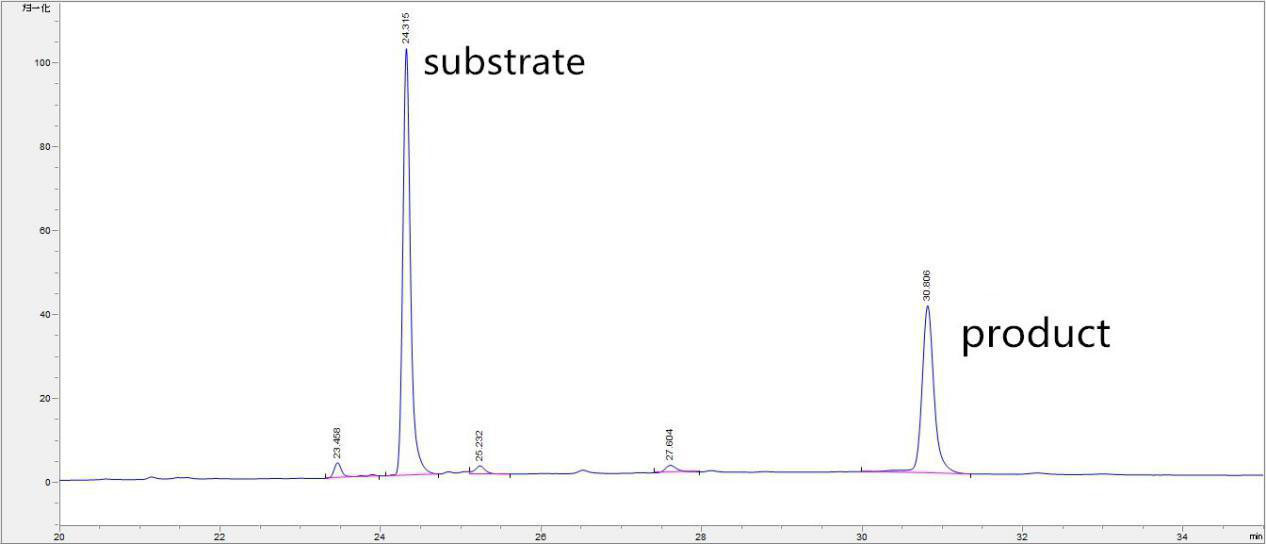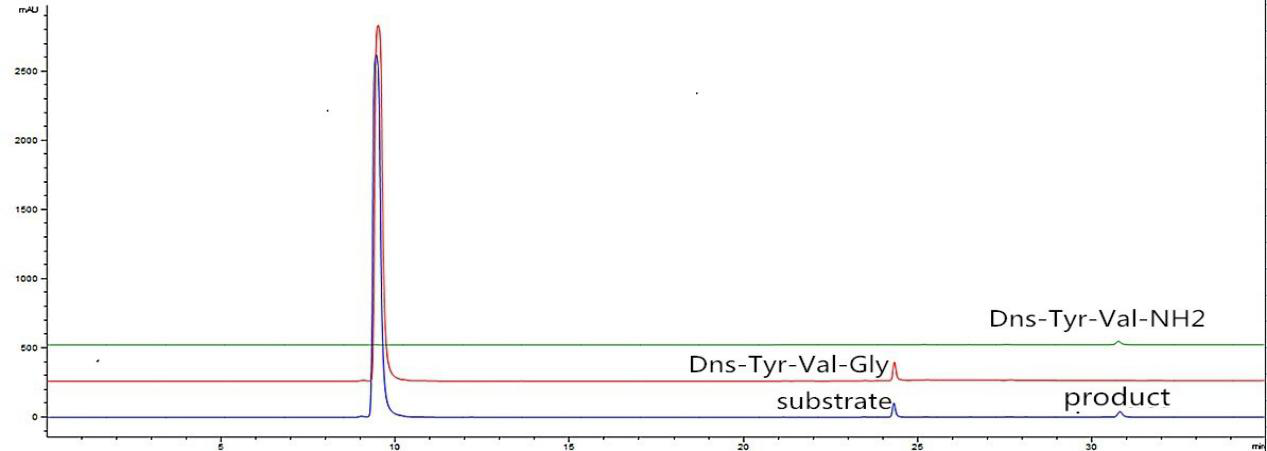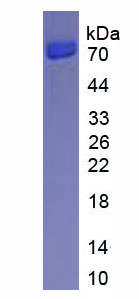
Details
ACTIVITY TEST
Buffer Formulation PBS, pH7.4, containing 0.01% SKL, 1mM DTT, 5% Trehalose and Proclin300. Traits Freeze-dried powder Purity > 95% Isoelectric Point 5.7 Applications Cell culture; Activity Assays.

Figure. Recombinant Rat PAM activity assay by HPLC.
Peptidyl-glycine alpha-amidating monooxygenase (PAM) is an enzyme that is required for the biosynthesis of many signaling peptides. It has two enzymatically active domains with catalytic activities-peptidylglycine alpha-hydroxylating monooxygenase (PHM) and peptidyl-alpha-hydroxyglycine alpha-amidating lyase (PAL). These catalytic domains work sequentially to catalyze neuroendocrine peptides to active alpha-amidated products. A typical activity assay using Dns-Tyr-Val-Gly as substrate, thus the recombinant rat PAM activity was measured by its ability to hydrolyze Dns-Tyr-Val-Gly to Dns-Tyr-Val-NH2. The reaction was preformed in 1mL containing 100mM MES/KOH pH 6.0, 30mM KI, 30mM KCl, 1μmol/L cupric sulfate, 100ug/mL catalase, 1% (v/v) ethanol, 0.001% (v/v) Triton X-100, 10mM ascorbate, 0.35mM/L Dns-Tyr-Val-Gly (0.2mg/mL) and initiated by addition various concentrations of PAM (0.1ug/mL, 1ug/mL, 5ug/mL). Incubated at 37℃ for 30min, the reaction stopped by addition 6% (v/v) TFA. The product and substrate was detected by RP-HPLC with UV-detection at 280nm, the analyses were performed at 25℃ employing a Agilent ZORBAX Poroshell SB C18 column (9.4×250mm, 5μm), the flow rate was 1ml/min. The mobile phase consisited of 100 mM sodium acetate (pH 6.5) and 35min linear gradient of 10-90% acetonitrile. The result was shown in Figure 1.
Figure. The reaction product compared with standard Dns-Tyr-Val-Gly and Dns-Tyr-Val-NH2.
As the Figure 1 shows, after 30min later ,the substrate have been hydrolyzed when the PAM was 5ug/mL. The retention time of Dns-Tyr-Val-Gly and Dns-Tyr-Val-NH2 is 24.315 and 30.806 respectively.
Figure. The sandard curve of Dns-Tyr-Val-NH2.
One unit of enzyme activity is defined as the amount of enzyme required to convert 1μmol of substrate to amidated product in 1min at 37°C. Thus the recombinant rat PAM activity is 2.4×106U.USAGE
Reconstitute in 10mM PBS (pH7.4) to a concentration of 0.1-1.0 mg/mL. Do not vortex.
STORAGE
Avoid repeated freeze/thaw cycles. Store at 2-8°C for one month. Aliquot and store at -80°C for 12 months.
STABILITY
The thermal stability is described by the loss rate. The loss rate was determined by accelerated thermal degradation test, that is, incubate the protein at 37°C for 48h, and no obvious degradation and precipitation were observed. The loss rate is less than 5% within the expiration date under appropriate storage condition.
Image

Figure. Gene Sequencing (Extract)
Image

Figure. SDS-PAGE
Partial purchase records(bought amounts latest0)
User Comment(Total0User Comment Num)
- No comment


 +86 571 56623320
+86 571 56623320




